I'm working on a project with three power inputs and I need to automatically switch between them (favoring the highest voltage). There are plenty of posts on this topic (especially on this exchange) and it seems like your options are diode ORing, FET switching or using an IC like the TPS2115A. My issue is power consumption since my main power supply is a primary CR2032 Coin Cell battery that I'm hoping to get 6+ years our of. This rules out diode ORing because of the voltage drop and every IC I've looked at consumes >10uA -- I can tolerate around 150na ideally.
TI's TPS22933A is one of those ICs; it does exactly what I need, but has a quiscent current of ~0.7uA even when bypassing the internal LDO. (below)
Currently, the system sits at 240na without any switching logic and draws 4ma during transmit for 40ms -- all at 3v. I want to keep that nominal current below 400na if possible. Is there a solution with very low leakage/power consumption while nothing is plugged in and the system is using battery power? Any help would be amazing, thanks!

